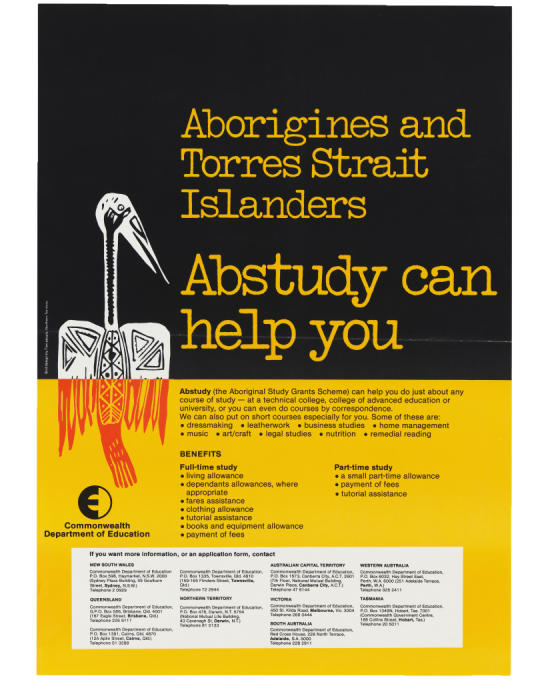1970s
Throughout the 1970s, Aboriginal and Torres Strait Islander activism focused on self-determination. These artefacts show the success of new targeted programs, including ABSTUDY and the Community Development Employment Program, and the continued fight for equal access to Unemployment Benefit.
1970
Autobiography challenges stereotypes about Aboriginal people
In the absence of government help, Aboriginal people often relied on their communities for support. Shirley Smith told her story of becoming an unofficial welfare worker while challenging stereotypes about those who got government payments.
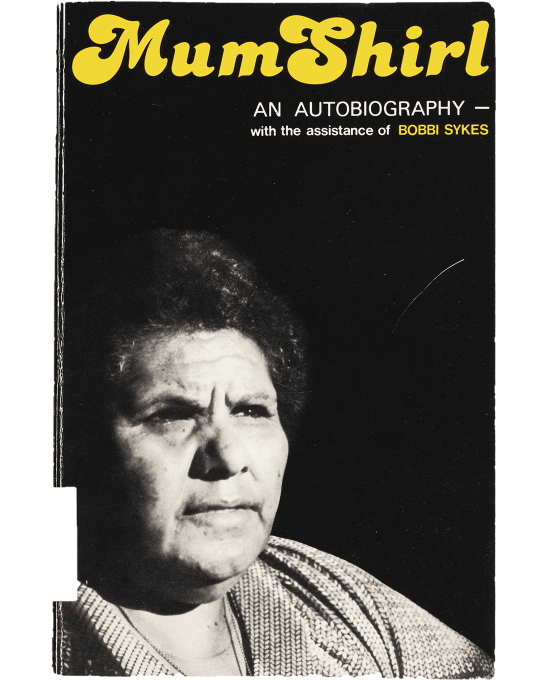
1970
Principal ensures students get payments
Getting access to payments often relied on direct advocacy. Letters from the principal of an Aboriginal co-operative school provide examples.
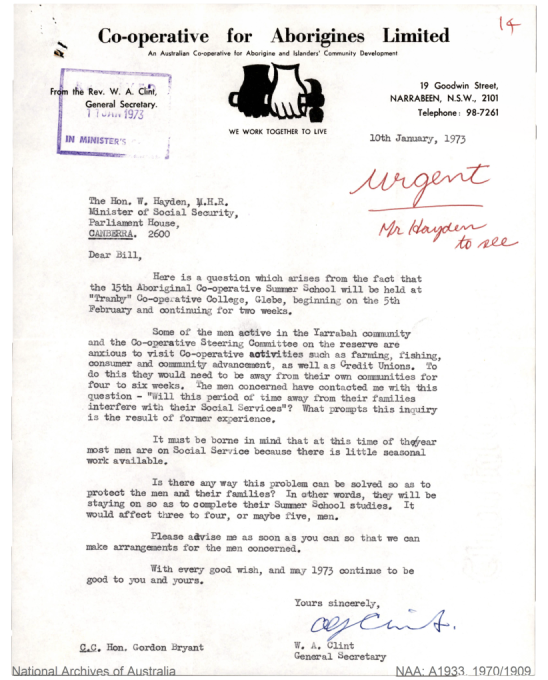
1970
Government introduces ABSTUDY and ABSEG
After introducing payments for Aboriginal and Torres Strait Islander students, the government ran ads in magazines for Aboriginal audiences.

1971
Article marks ABSTUDY successes
An article about a new Aboriginal study grant profiled 3 of its early success stories – people who would go on to be well-known public figures over the decades ahead.
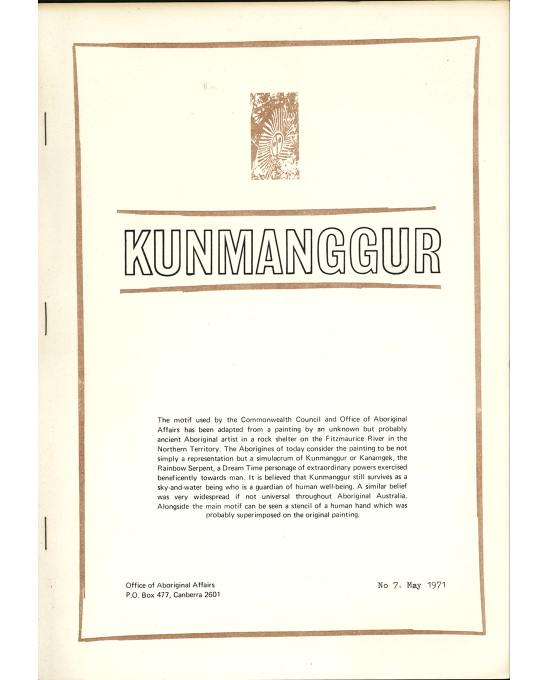
1972
Workers involved in walk-off denied payments
Aboriginal workers walked off the Victoria River Downs cattle station in 1972 over pay and working conditions. The government was hesitant to pay Unemployment Benefit even though they passed the work test.
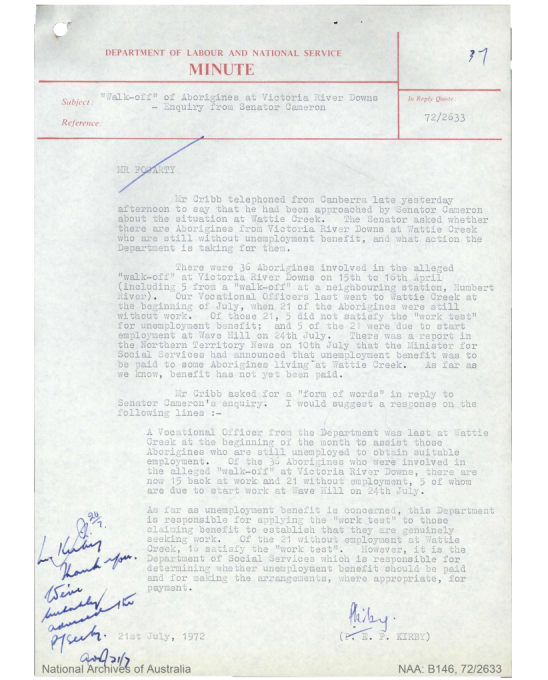
1973
Government discusses impacts of payments on Aboriginal people
In response to questions about whether the government should further control payments for Aboriginal people, the Minister for Social Security discussed his concerns about the impacts payments were having, particularly on remote Aboriginal communities.
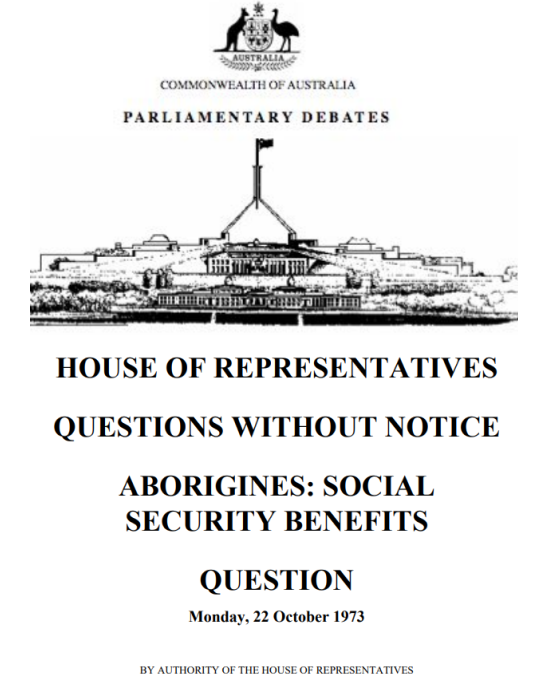
1973
DSS questioned about payments to Aboriginal people
The Standing Committee on Aboriginal Affairs questioned a high-level DSS official in 1973 and 1975. They touched on a range of issues relevant to Aboriginal people receiving payments.
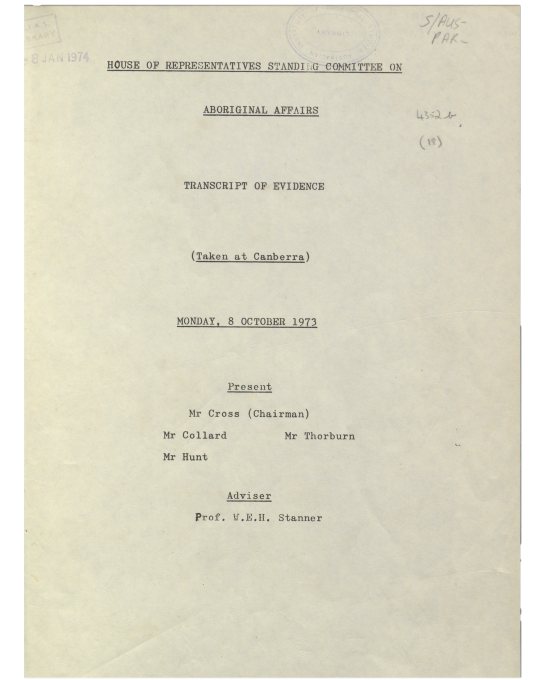
1973
DSS asked to translate information
In a series of letters, the Department of Aboriginal Affairs asked the Department of Social Security to publish information about government payments in language.
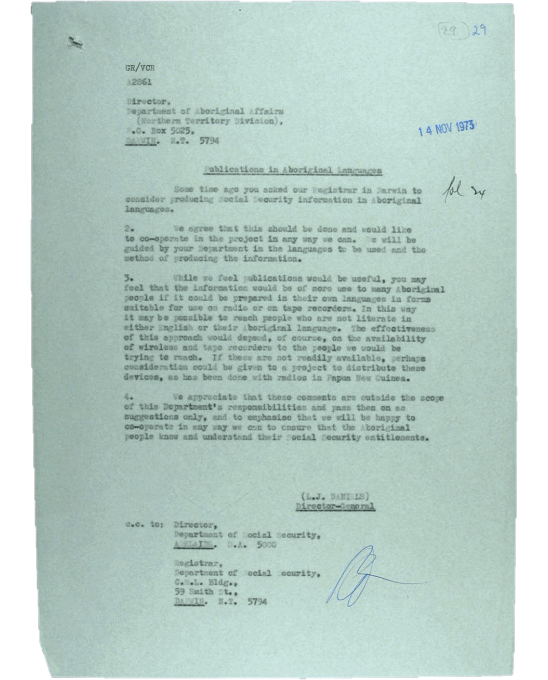
1973
Activists use payments for change
Aboriginal and Torres Strait Islander people used government payments to gain further rights and freedoms. Activist Joyce Clague’s story reveals how payments became linked to land rights.

1974
Report shows changing views of direct payments
A 1974 report about the impacts of bauxite mining on the Yirrkala community in Arnhem Land recommended against direct government payments for the community, reflecting a change from advice in a 1963 report.
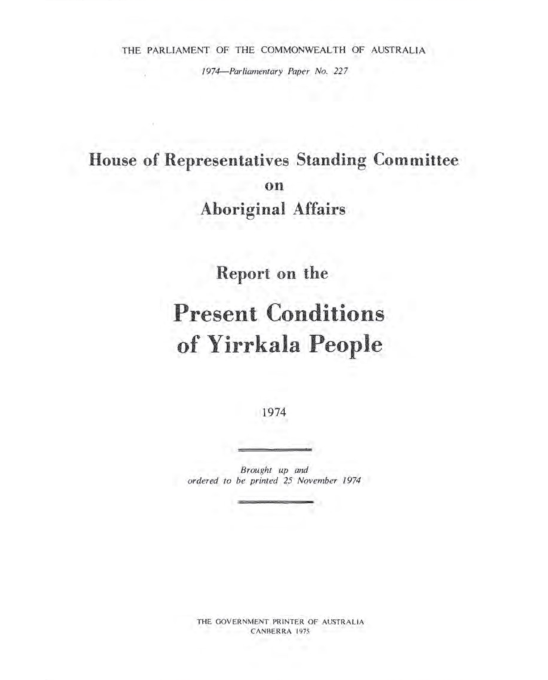
1974
Public servant shares wide-ranging impacts of discrimination
At the 2015 Mabo Oration, Dr Dawn Casey discussed the discrimination her family faced when seeking a government payment in the 1970s and her own experiences of discrimination throughout her career in the Australian Public Service.

1975
Report looks at impacts of payments on Aboriginal families
Researchers interviewed Aboriginal families in Adelaide about their housing, income, government payments and work as part of a wider study into poverty in Australia.
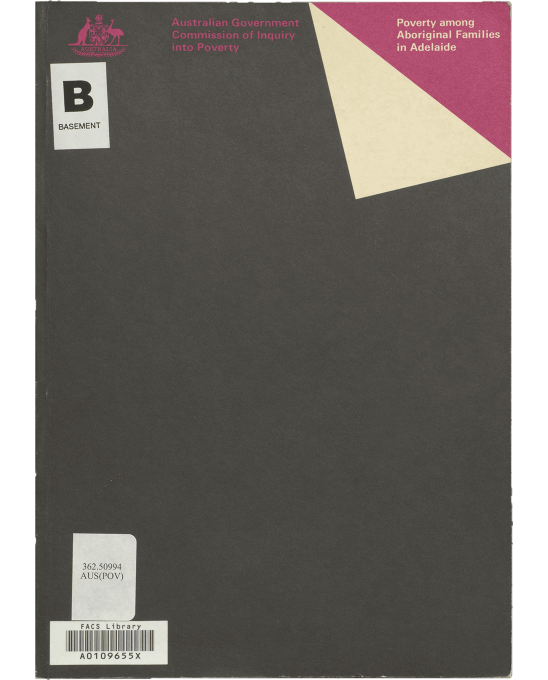
1976
Report recommends Community Development and Employment Program
To address high unemployment rates, the government looked into ways to increase employment in Aboriginal communities. They considered introducing community-based work programs, but also looked into ways to make it harder to get Unemployment Benefit.
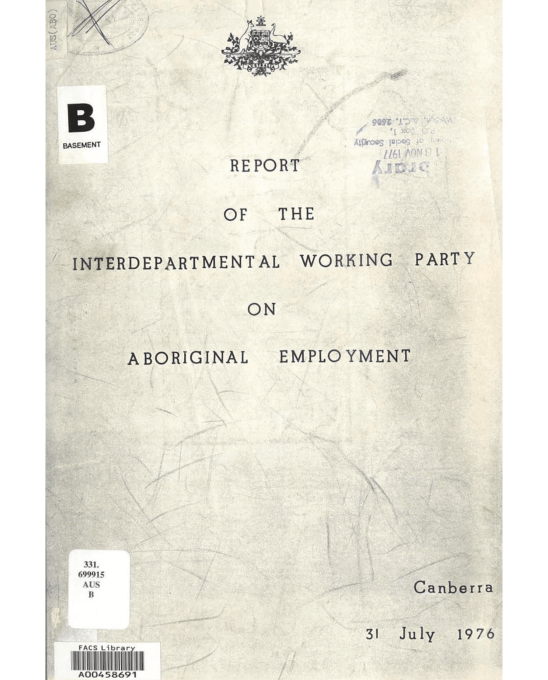
1977
Autobiography details one man’s pension experience
Social services impacted people in different ways. This excerpt from Jimmie Barker’s autobiography details his experience of having to stop work and beginning to get the pension.
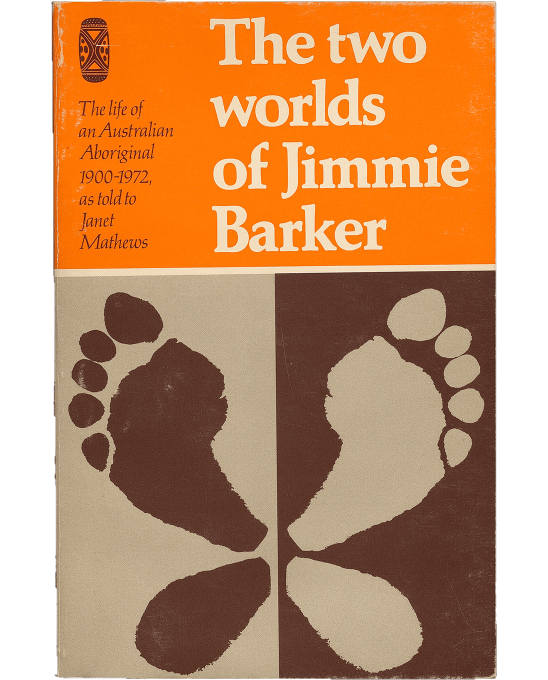
1977
Government criticised for Unemployment Benefit rules
During discussions in the House of Representatives, Opposition Leader Gough Whitlam criticised the government of the day over proposed changes to procedures affecting Aboriginal people's access to Unemployment Benefit.
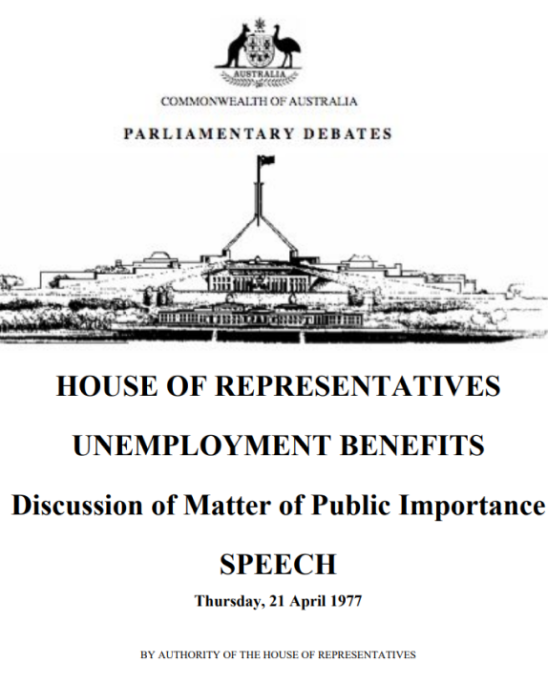
1977
Government introduces CDEP
The Fraser Government introduced the Community Development Employment Program in 1977 to address Aboriginal unemployment and reduce the number of people applying for Unemployment Benefit.
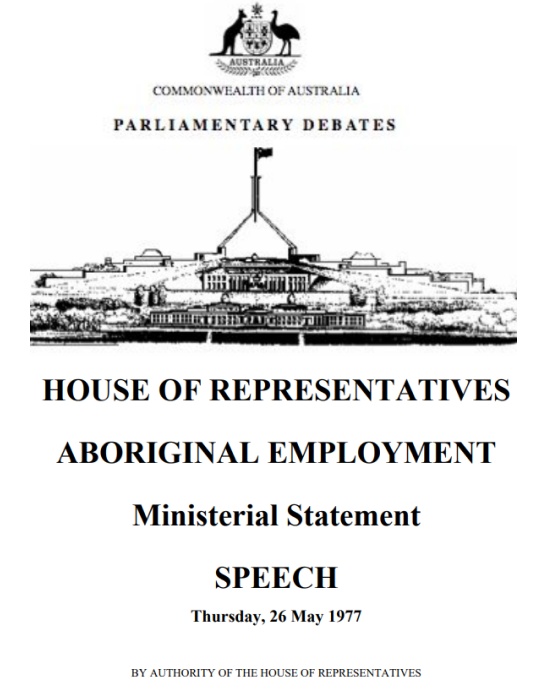
1979
Researcher highlights complex issues in remote servicing
In a briefing to public servants, Dr Young discussed difficulties faced by remote Aboriginal communities in the Northern Territory. She highlighted DSS servicing gaps that she believed worsened the situation.

1979
ABSTUDY ads use Aboriginal artwork
To better reach Aboriginal and Torres Strait Islander audiences, the government started using Aboriginal artwork on their advertisements.
